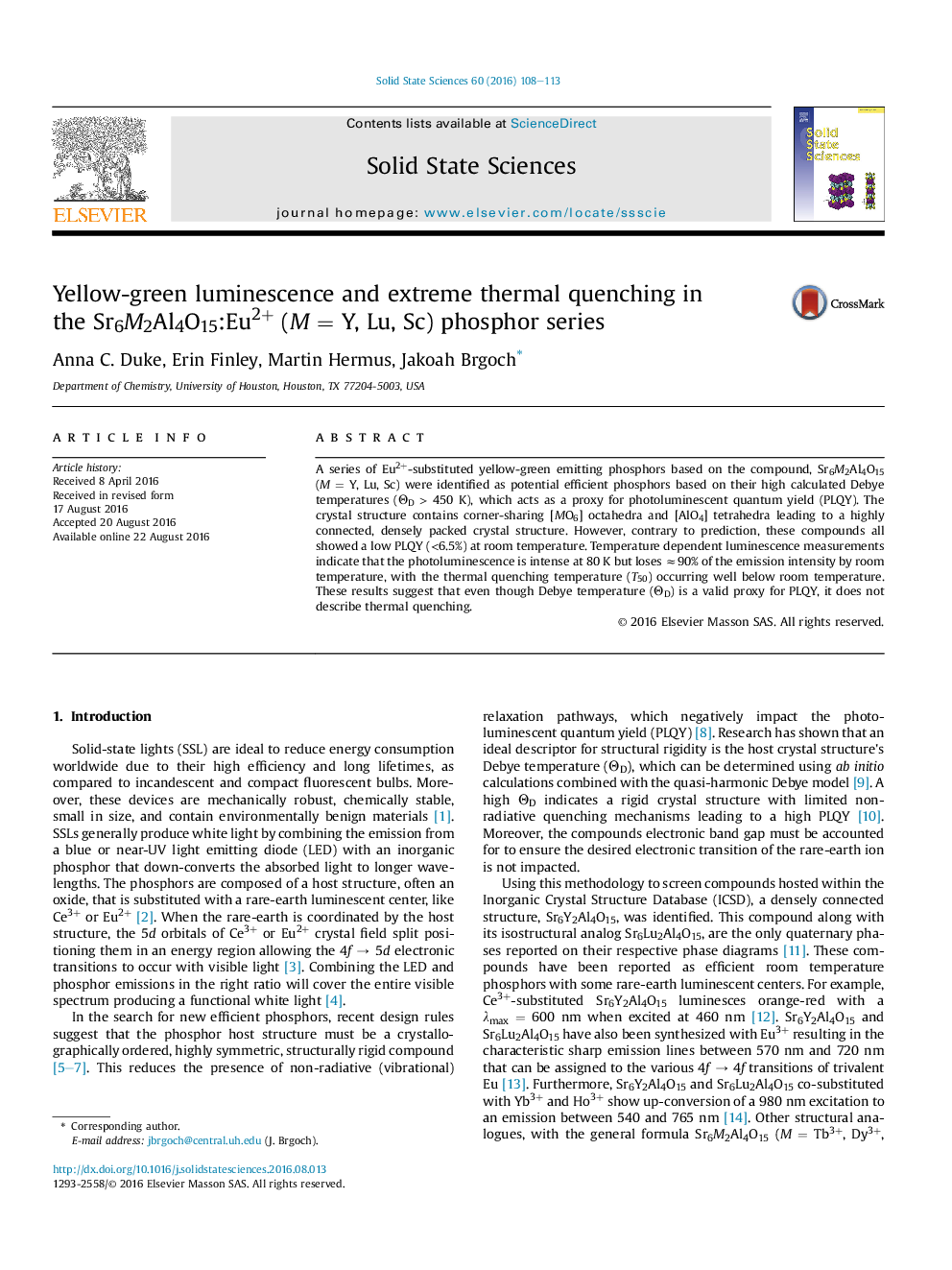| کد مقاله | کد نشریه | سال انتشار | مقاله انگلیسی | نسخه تمام متن |
|---|---|---|---|---|
| 1503947 | 1510962 | 2016 | 6 صفحه PDF | دانلود رایگان |

• Eu2+ substituted phosphors for solid-state lighting.
• Debye temperature in these phases is a questionable proxy for quantum yield.
• Extreme thermal quenching is present in these phases limited the yield.
• A new proxy is necessary to screen novel phosphor hosts.
A series of Eu2+-substituted yellow-green emitting phosphors based on the compound, Sr6M2Al4O15 (M = Y, Lu, Sc) were identified as potential efficient phosphors based on their high calculated Debye temperatures (ΘD > 450 K), which acts as a proxy for photoluminescent quantum yield (PLQY). The crystal structure contains corner-sharing [MO6] octahedra and [AlO4] tetrahedra leading to a highly connected, densely packed crystal structure. However, contrary to prediction, these compounds all showed a low PLQY (<6.5%) at room temperature. Temperature dependent luminescence measurements indicate that the photoluminescence is intense at 80 K but loses ≈90% of the emission intensity by room temperature, with the thermal quenching temperature (T50) occurring well below room temperature. These results suggest that even though Debye temperature (ΘD) is a valid proxy for PLQY, it does not describe thermal quenching.
Figure optionsDownload as PowerPoint slide
Journal: Solid State Sciences - Volume 60, October 2016, Pages 108–113